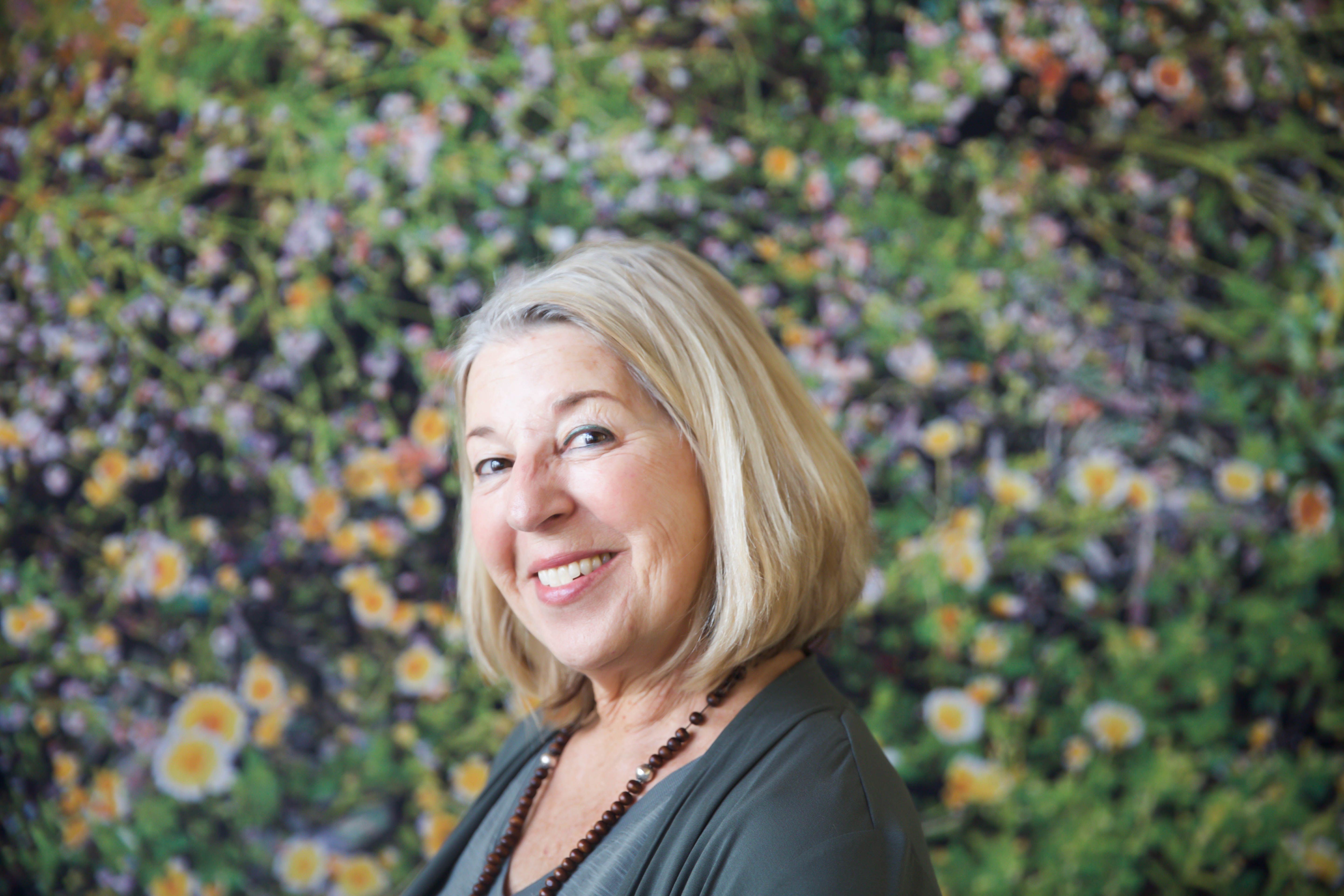
Professor of Art Nancy Macko was recently appointed to the Mary W. Johnson Professorship in Teaching, which was established to honor a member of the faculty who exemplifies, by his or her teaching and involvement in the affairs of the College, commitment to the welfare of students and to Scripps. Since 1986, Macko has been a member of the Art Department, serving as chair for several years. She has also served as chair of the Gender and Women’s Studies Department and has been actively involved in the Intercollegiate Media Studies program and the Core Curriculum in Interdisciplinary Humanities. She has been elected to the Faculty Executive Committee three times.
Macko regularly mounts solo exhibitions of her art. Her newest body of work, The Fragile Bee, has been exhibited in Texas, Colorado, California, and Iowa and will travel next year to Connecticut. Her work also is held in many public and private collections, including the Achenbach Foundation for Graphic Arts, Fine Arts Museums of San Francisco; Bell Gallery, Brown University, Grunwald Center for the Graphic Arts, UCLA Hammer Museum; Los Angeles County Museum of Art; Mount Holyoke College Museum of Art; New York Public Library; North Dakota Museum of Art; Pomona College Museum of Art; Portland Art Museum; Rhode Island School of Design Museum; and Ruth Chandler Williamson Gallery, Scripps College.
The Office of Marketing and Communications got to chat with Professor Macko about her art, her teaching, and the secret life of bees.
SC: You’ve drawn upon images from the honey bee society to explore the relationships between art, science, technology, and ancient matriarchal cultures. Can you tell us more about these links and what you have learned?
NM: In my work, there is a strong connection to a feminist sensibility and an equally strong desire to express this through a spiritual lens. I have, for example, studied the construction of feminist utopian societies as portrayed in science fiction. In these imagined worlds, women strive to attain strength, autonomy, and freedom. My work is an ongoing analysis of the honeybee society and its parallels with the ways in which women form community. The hive functions as a type of utopia in which there is balance and harmony. The examination of the relationships between art and technology and the deployment of digital technology and mathematics in my work have allowed me to investigate the relationship of the rational and the organic as other forms of balance and harmony.
SC: How has the feminist art movement informed your work, and how do you understand your role in the movement?
NM: My first awakening to feminism occurred in 1972. I registered for a class at Queens College in New York titled Women in Art: Contemporary Problems, taught by artist Jane Kaufman, one of the foremost artists in the Decorative Arts movement and a founding member and key contributor to the early feminist movement in art. It was a paradigm shift for me; I left New York and headed to California, along the way working and studying with key feminist artists like Judy Chicago. As described above, my work has explored issues related to technology, ancient matriarchal cultures, and feminism. This complex subject, as well as a combination of media, has allowed me to examine and respond to issues related to eco-feminism, nature, and the importance of ancient matriarchal cultures.
My interpretation of being a feminist artist was not only working from a feminist perspective, but also making the ideas and values of feminism—autonomy, independence, freedom—accessible to others through my teaching and activism as a cultural worker and as an artist.
SC: Any new projects in the works?
NM: I was at the Van Gogh Museum this past June—they were featuring his Almond Blossom painting, and the museum store was filled with reproductions of the painting on every possible thing you could think of. This made me think about the possibility of photographing/documenting the controlled pollination process, when almond farmers in truck millions of bees from out of state into California’s Central Valley to pollinate the trees in springtime.
I also recently heard from an alumna, B. J. Doty ’96, who reminded me that another artist, Garnett Puett, worked with bees to create his sculptures and now owns and manages a bee farm on the Big Island in Hawaii. I’ve gotten in touch with him and hope to visit and document their pollination process.
SC: What three things have you been thinking about lately, besides teaching and making art?
NM: Teaching and making art seem to consume a lot of my time! Does thinking about other people’s art count?
SC: Definitely!
NM: Ok. I’ve been reading about Hollis Taylor, a talented musician and violinist, who has just written a book about her study of the pied butcherbird, which lives in the Australian Outback and whose song is like jazz improvisation. I also recently watched Ryuichi Sakamoto: Coda, a film about the contemporary composer’s work. It gives a peek into the creative process—something I never tire of seeing. After the film, I was so aware of all the sounds—natural and human-made—that exist in our world all the time, and how they can meld or create dissonance depending on the layers and the timing. And the third thing? This summer, I was consumed with watching season two of The Handmaid’s Tale!

